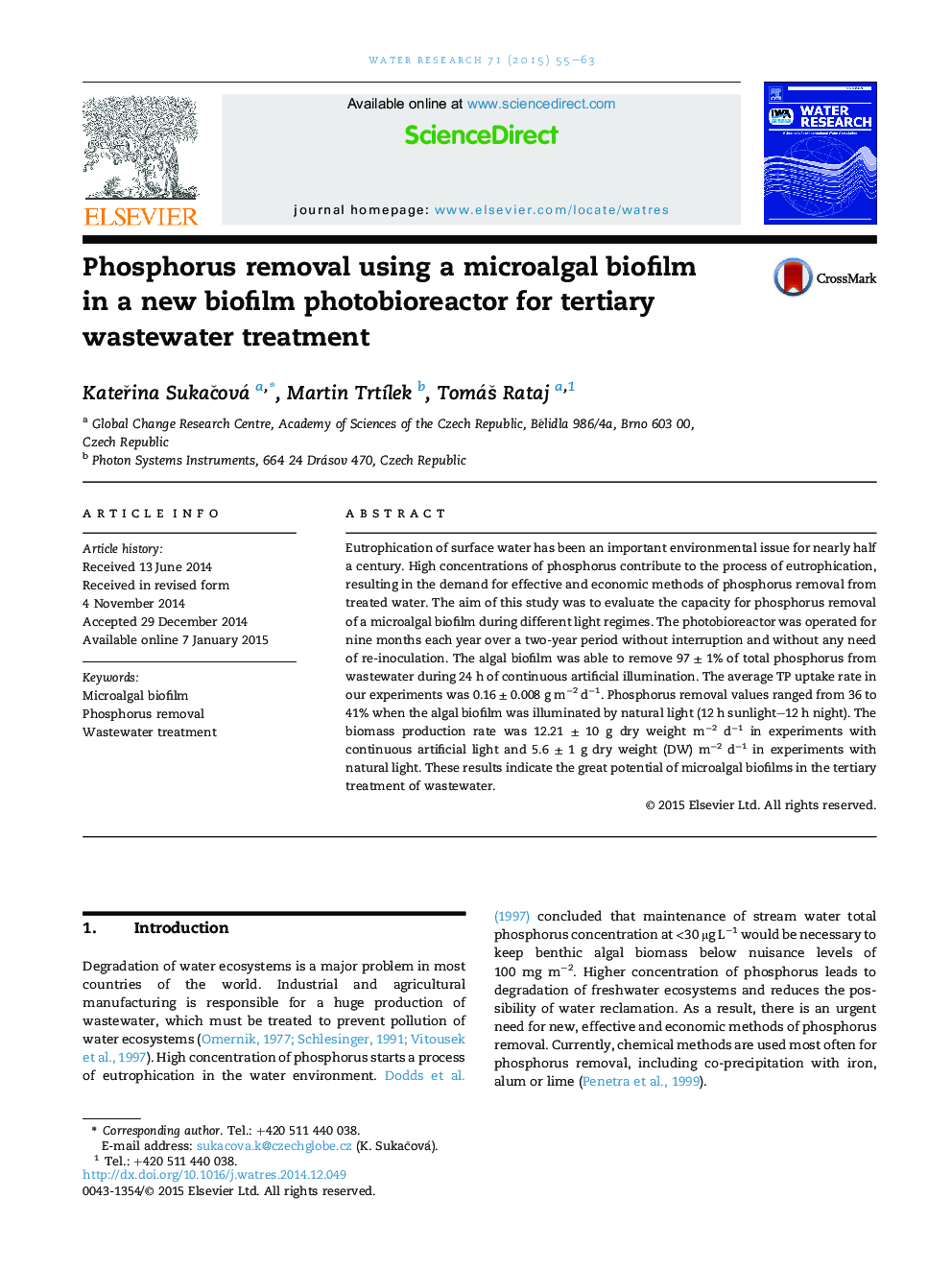| کد مقاله | کد نشریه | سال انتشار | مقاله انگلیسی | نسخه تمام متن |
|---|---|---|---|---|
| 4481168 | 1623097 | 2015 | 9 صفحه PDF | دانلود رایگان |

• Algal biofilm was able to remove 97% of total phosphorus from wastewater.
• The average total phosphorus uptake was 0.16 g m−2 d−1.
• Maximal biomass production rate was 12.21 g dry weight m−2 d−1.
Eutrophication of surface water has been an important environmental issue for nearly half a century. High concentrations of phosphorus contribute to the process of eutrophication, resulting in the demand for effective and economic methods of phosphorus removal from treated water. The aim of this study was to evaluate the capacity for phosphorus removal of a microalgal biofilm during different light regimes. The photobioreactor was operated for nine months each year over a two-year period without interruption and without any need of re-inoculation. The algal biofilm was able to remove 97 ± 1% of total phosphorus from wastewater during 24 h of continuous artificial illumination. The average TP uptake rate in our experiments was 0.16 ± 0.008 g m−2 d−1. Phosphorus removal values ranged from 36 to 41% when the algal biofilm was illuminated by natural light (12 h sunlight–12 h night). The biomass production rate was 12.21 ± 10 g dry weight m−2 d−1 in experiments with continuous artificial light and 5.6 ± 1 g dry weight (DW) m−2 d−1 in experiments with natural light. These results indicate the great potential of microalgal biofilms in the tertiary treatment of wastewater.
Figure optionsDownload high-quality image (178 K)Download as PowerPoint slide
Journal: Water Research - Volume 71, 15 March 2015, Pages 55–63